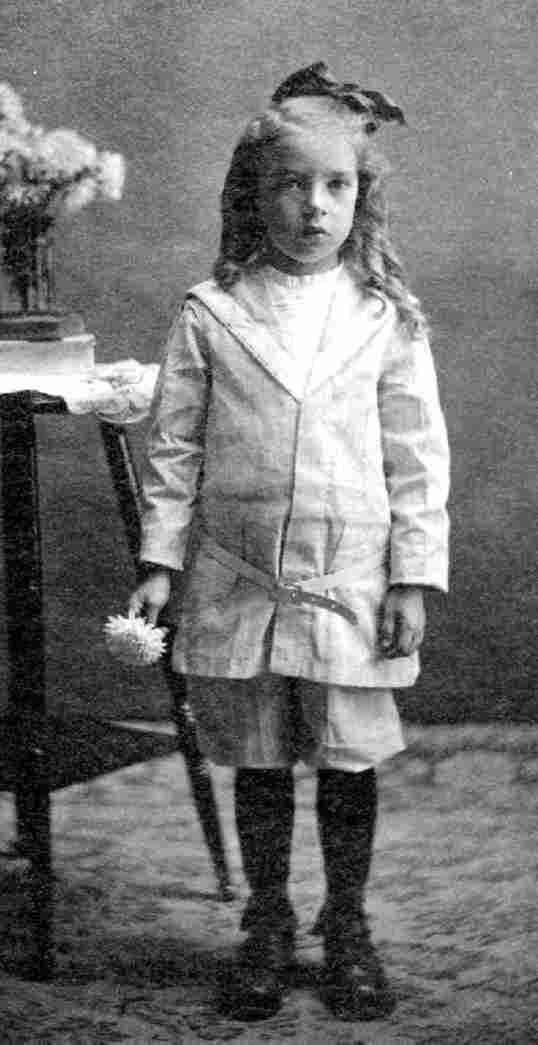
Figure 1.--This American boy in a portrait taken about 1905 wears a dark-colored hair bow. White was more common. This one might have beern red.


Figure 1.--This American boy in a portrait taken about 1905 wears a dark-colored hair bow. White was more common. This one might have beern red. |
I am not sure if the color of boys' hair bows differed from those for the girls. As for the girls, white bows seem to have been a particularly popular color. Colored bows were a lot less common. Perhaps colored bow were coordinated with a child's dress, but this seems less common once a boy was breeched, as there
is less diversity in boys's suits than in dresses. In the available formal photographs, at least in the late 19th and early 20th Century, the white bows were by far the most common. HBC's hair bpw expert reports, "I wish there was someway to tell the color of bows in the old photographs. Several of the French ones from Renoir are red. The one worn with the stripped sailor suit appears to be white. I guess pastel color such as blue or pink would probably show up as white on black and white photos. Too bad color photography wasn't invented in the 19th century."
I am not sure just what colors the colored hair bows were. The black and white photography of the day provide few clues as to actual colors. The available photographs, however, do reveal that both light and dark colored ribbons were used. Painted portraits would help answer the question, but the authors know of few paintings showing boys in hair bows. We plan to assess girl's portraits to get sime idea as to just what colors were involved.
Based on the avaialble photographic images, the most common color for boys' hair bows was white. Many of the images we have noted show white hair bows. This was also the most common color for girls.
Some of the hair bows appear to be light pastel colors,
perhaps blues or pinks. The gender specific colors we now accept, however, were not conventionally accepted in the 19th or even early 20th Century. In fact, some mothers used pink, considered a stronger color, for boys and blue, considered more delicate, for girls. Thus when assessing black and white photographs, modern conventions can be misleading.
We have also noted some medium colored hair bows. We do not know, however, just what colors were involved.
White are light colored hair bows are by far the most common, but we also note darker colored hair styles. Assessing the black and white photographs is difficult, but at least some appear to be bright reds. Other bright colors may have been used as while. Some seem desugned to match or compliment the color of the boy's ourfit. Efforts to match the collar vows do not seem common. One would assume that mothers would not usually choose black hairbows, but HBC can not yet substantiate this with actual contemprary sources. Of course there could be some exceptions, perhaps black hair bows were worn for very formal occasions or when wearing a black Fauntleroy suit. Perhaps thery were worn for mourning.
Hair bows of course were only strips of ribbon and thus quite inexpensive. It is likely that many mothers had a variety of ribbons for their children, including the boys. While white appears to be
the most common and could be worn with virtually any outfit, mothers might choose colored hairbows to match the outfit, shoes, or even hair color.
Although not nearly as common as solid color hair bows, children also wore patterened hair bows. We have noted both plaid and polka-dot pattern hair bows. There may have been other hair bow patterns as well. We have not noted boys commonly wearing the patterened hair bows. This may be because there are far fewer images of boys wearing hair bows than girls. We are not sure that this was attributable to gender connotations. We do note boys wearing patterened collar bows. Thus there does not appear to have been gender conventions.
I am not sure if breeching affected hair bow colors. Certainly a boy in dresses wore a much wider range of colors than the more muted colors worn after breeching with Fauntleroy suits and sailor suits. Thus there were more colors to match hair bows with.
The fashion conventions for boys' hair bows are not clearly understood by HBC at this time. We do not know if hairbows were chosen to match outfits or contrast with them. Perhaps mothers variously used both appraoches. A mother might chose a colored hairbow to add a splash of bright color to a black or deep blue velvet suit or a blue or white sailor suit. The sash with a formal Fauntleroy suit was commonly used in this way. Sailor suits, however, were notorously devoid of color embelishments.
Oneinteresting question is why mothers chose specific colors. White could be worn by any boy or with any outfit. The choice of colors was more complicated. Some mother chose blue to match a boy's blue eyes. Other colors might be chosen to match or contrast with the the color of the outfits the boy was wearing. Or some mothers may have simoply had favorite colors.
Navigate related Boys' Historical Clothing Web Site pages:
[Return to the Main boys' hairbow page]
[Hair styles]
[Collar bows]
[Dresses]
[Kilt suits]
[Kilts]
[Fauntleroy suits]
[Fauntleroy dresses]
[Sailor dresses]
[Pinafores]
[Smocks]
Navigate the Boys' Historical Clothing Web Site:
[Introduction]
[Activities]
[Biographies]
[Chronology]
[Clothing styles]
[Chronology]
[Bibliographies]
[Contributions]
[Essay]
[FAQs]
[Glossaries]
[Satellite sites]
[Tools]
[Boys' Clothing Home]
